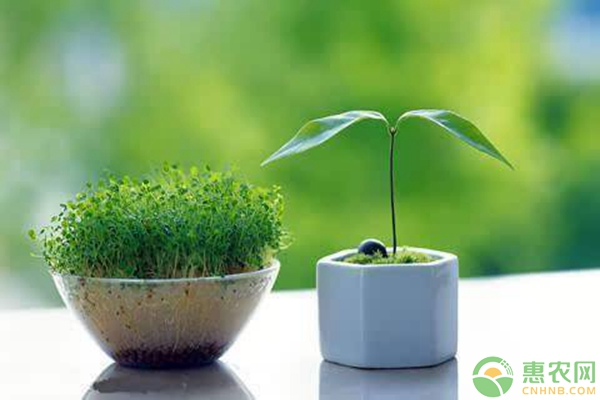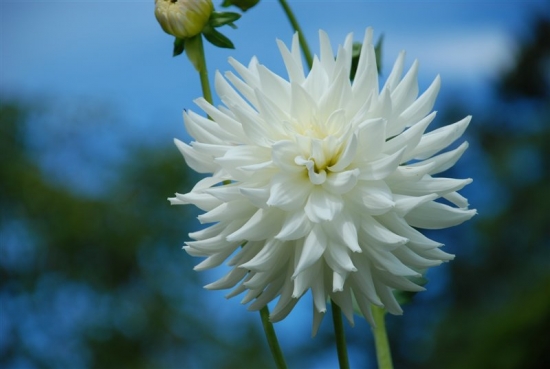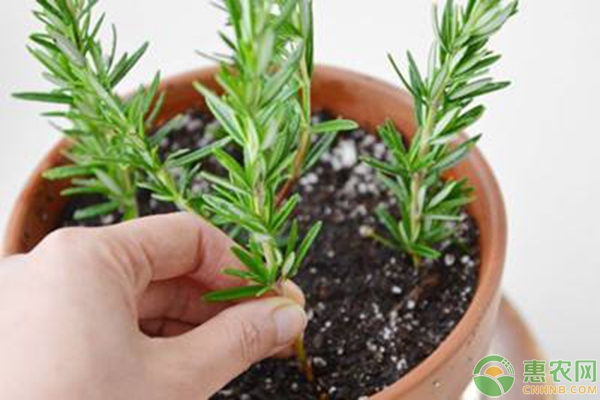How to sow and reproduce flowers?
Most of the sowing time is in spring and autumn, usually from February to April and from August to October in autumn. Annual flowers are mostly carried out from April to May in spring, and biennial flowers are mostly carried out from August to September in autumn.
Families often use pot sowing, and conditional sowing can also be broadcast in the open field, on demand or strip sowing, and transplant after emergence. Before sowing, wash the basin clean, fill the basin hole with tiles, cover the basin with coarse sand or other coarse drainage layer, then fill in the sifted fine sand loam, compact and scrape the basin soil, and then sow seeds. Larger seeds, such as impatiens, can be evenly sown one by one, compacted and covered with a layer of fine soil.
Small seeds, such as cockscomb seeds, are sown in the basin, gently press the basin soil, cover a thin layer of fine soil, and spray water with a fine-eyed pot, or soak the water upward from the bottom until the soil is wet, so that the seeds can fully absorb water. Cover the basin with glass or film to reduce water evaporation. Sowing and selecting small seeds and removing them evenly on the soil surface, this method can be adopted for both ground and potted flowers, which is characterized by high seedling yield per unit area, but overcrowding will cause excessive growth of seedlings or lead to diseases and insect pests. Strip sowing sows the seeds in strips on the soil surface, keeping a certain distance between rows, mainly used for open field planting.
It is characterized by good light and ventilation and strong seedlings, but the seedling yield per unit area is not as good as that of sowing. It is generally used when there are more varieties and less seeds. On-demand sowing, also known as hole sowing, sows seeds in holes dug according to a certain row spacing, sowing 3 seeds in each hole. One plant was retained after germination. It is characterized by sufficient sunlight and good ventilation, but the output is low. It is generally used for the reproduction of large seeds and precious flowers. After sowing, the soil surface should be slightly suppressed with planks, so that the seeds and soil are dense. Those who are exposed to the ground should cover the border with straw thinly to prevent the soil from being washed away when watering or raining. Water immediately after planting.
Before sowing, the soil should be kept moist, and the mulch should be lifted for a few minutes in the morning and evening to make it breathable and covered during the day. After the seeds emerge, the mulch should be removed immediately so that they can see the light gradually, but do not be immediately exposed to strong light to prevent the sudden death of the seedlings. And time for seedlings to be weak and stay strong, so that the seedlings left behind can get sufficient sunshine and nourishment. The seedlings should be watered immediately after each seedling to stabilize the roots of the seedlings, and when the seedlings grow 1 or 2 true leaves, they will be transplanted.
How to sow and reproduce family flowers? Methods and skills of sowing and propagation of flowers
The sowing of flowers is mainly for the better reproduction of flowers. Generally, the seeds sown are the seeds of flowers. The seedlings grown by sowing have developed root system, long life span and strong viability. Usually there are two kinds of flower sowing and propagation in the open field, so let's take a look at the methods and skills of sowing and reproduction of these two kinds of flowers together with Huinong net editor.

1. Sowing and propagation of flowers in open field
The general method of sowing in the open field is as follows.
(1) the sandy soil of the seeding bed should be loose and fertile, rich in humus, and the environment should ensure good ventilation, adequate sunlight and good drainage.
(2) soil preparation and fertilization. The soil requirements of the seeding bed: ploughing 30cm deep, removing sundries, covering 12cm thick soil, with barnyard manure or rotten and fine compost as base fertilizer, the bed is flat. When sowing with calcium superphosphate to promote growth, the seeding bed should be leveled after suppression, and then flatten the bed.
(3) the depth of soil cover is different with different seed size. Generally speaking, the depth of soil covering of large seeds is 3 times of the thickness of seeds, while the degree of small seeds is that there is no seed. 3cm L diameter sieve.
(4) after covering the soil, cover a layer of straw evenly, and then spray water with a fine hole spray can. In the dry season, irrigate before sowing and sow the soil after infiltration to keep it moist. Rainproof facilities are needed in the rainy season. Remove the mulch when the seed is germinated and unearthed.
2. Sowing and propagation of potted flowers
Potted plants are generally raised indoors, and the sowing date has little to do with the season, generally according to the flowering period.
(1) prepare pots and soil for sowing. Shallow basin and deep 10cm, sandy soil should be rich in humus. The proportion is as follows.
① tiny seeds. Garden soil 2: River sand 3: rotten leaf soil 5.
Seed in ②. River sand 2: rotten leaf soil 4: garden soil 4.
③ big seed. River sand 1: garden soil 4: rotten leaf soil 5.
(2) the drainage hole at the bottom of the basin is covered and filled with broken pieces or coarse gravel, accounting for 1 × 3 basin depth, the top is sifted coarse-grained culture soil, accounting for 1 inch 3 thick, and the uppermost layer is seeding soil, accounting for 1 inch 3 thick. The soil surface is compacted and scraped flat so that the soil surface is 1cm away from the basin. The shallow basin is immersed in water, but it cannot be submerged. After the soil is soaked, the basin is put forward. After too much water seeps out, the seeds can be sown.
(3) Management after sowing. Keep the basin soil moist, and the seedlings gradually move to the place where the sunlight is sufficient after they are unearthed.
The above are the methods and skills of flower sowing and reproduction arranged by Huinong net Xiaobian. Have you learned all these?
Sowing and Propagation of Flowers
Sowing and Propagation of Flowers
1. Define
Sowing and reproducing children reproduce with seeds, also known as sexual reproduction. Seedlings with sexual reproduction are called seedlings or seed seedlings, while seedlings with asexual reproduction are called nutritious seedlings.
The utility model has the advantages of large number of reproduction, simple and easy method, complete root system and strong growth. Disadvantages: some flowers pollinated by cross-pollination are easy to produce variation, and it is difficult to maintain the excellent characteristics of the original variety.
two。 Method
(1) seed harvesting for most flower seeds, they can not be harvested until the seeds are fully mature.
For a small number of seeds that are easy to burst and spread, such as impatiens and pansy, or water lily seeds that are easy to be washed away by water, you can put on a gauze bag when it is about to mature, and then fall into the bag after it is ripe, if it is not bagged, it should be harvested in the early morning when the air humidity is high before cracking.
On the same plant, the seeds produced by early flowering should be selected, among which the seeds born on the main culm or main branch are better. Late blooming flowers after full bloom and seeds borne by flowers on weak branches are generally not suitable for seed use.
(2) seed preservation there are several common methods for seed preservation:
① drying storage method: dry-resistant 2012 grass flower seeds are fully dried and stored in paper bags or cardboard boxes.
② drying and sealing method: fully dry the dry-resistant 2012 grass flower seeds, put them in a container such as a human can or bottle, seal and store in a cold place.
③ low temperature storage method: fully dried seeds were stored at a low temperature of 1 ~ 5 °C.
④ stratification storage method: the seeds of some flowers are easy to lose their germination power when they are stored under dry strips for a long time, so the stratification method can be used, that is, the seeds are piled up layer by layer with wet sand. Dormant seeds treated in this way can promote germination. The seeds of peony and peony can be stored in this way after harvest.
⑤ water storage method: the seeds of some aquatic flowers, such as water lilies and king lotus, must be stored in water in order to maintain their germinating power. Their seeds are different from lotus seeds, their seed coat is relatively thin, and it is easy to lose water under dry conditions, which affects the seed germination ability.
(3) sowing
① seed selection: the success or failure of sowing and reproduction depends on the vitality of the seed. All kinds of flower seeds have a certain preservation life, beyond this number of years, the germination rate is significantly lower, or even lose the germination power, this kind of seed can not be sown. For example, the preservation life of gerbera seeds is only 3-6 months; another example is Cymbidium, whose seed coat is poor in water retention, and the kernels preserved for a long time will wither and die, so they should be sown as they are picked. The lotus seed with the longest life among the flower seeds is the lotus seed, which was dug up 900 years ago in Xinjin, Liaoning Province in the 1950s. After sowing in Dalian, it can not only sprout and grow, but also blossom and bear fruit.
② disinfection: in order to prevent flower seedlings from contracting diseases during sowing and germination, seeds need to be sterilized before sowing. The main methods are as follows: soaking seeds in 60 °C warm water or 1% copper sulfate solution for 30 minutes; soaking seeds in 1% formalin solution for 15 minutes; 1 kg seed mixed with 40 grams of thiram.
③ sowing methods: generally speaking, there are three sowing methods: sowing method, strip sowing method and on-demand method.
When sowing very small seeds such as Pu Baobao and four Seasons Begonia, the sowing method is often used, that is, the seeds are scattered evenly on the nursery bed. When sowing impatiens, pineapple and other small seeds, the strip sowing method is often used, that is, the seeds are sown in strips. When sowing large seeds such as Cymbidium and cyclamen, the method of on-demand sowing is often used, that is, digging holes according to a certain distance between plants.
- Prev

Which kinds of flower reproduction are there?
The methods of flower reproduction can be divided into four categories: sexual reproduction, asexual reproduction, unisexual reproduction and tissue culture reproduction. Sexual reproduction is also called seed reproduction. It is through the role of the female and male organs of the flower, that is, the combination of pollen and ovules to form seeds, which are used to reproduce. The roots of seedlings produced by seeds are strong.
- Next

How to propagate flowers by cutting?
The leaves of the plant are used for cutting treatment. If the leaves of African violets are planted in the soil or soaked in water, they can take root in the petiole. A method of cutting with a leaf bud attached to a leaf and a few stem cuttings. The stem can be cut off near the bud and grow longer under the bud, so that the growth is strong and the root is strong.
Related
- Fuxing push coffee new agricultural production and marketing class: lack of small-scale processing plants
- Jujube rice field leisure farm deep ploughing Yilan for five years to create a space for organic food and play
- Nongyu Farm-A trial of organic papaya for brave women with advanced technology
- Four points for attention in the prevention and control of diseases and insect pests of edible fungi
- How to add nutrient solution to Edible Fungi
- Is there any good way to control edible fungus mites?
- Open Inoculation Technology of Edible Fungi
- Is there any clever way to use fertilizer for edible fungus in winter?
- What agents are used to kill the pathogens of edible fungi in the mushroom shed?
- Rapid drying of Edible Fungi

